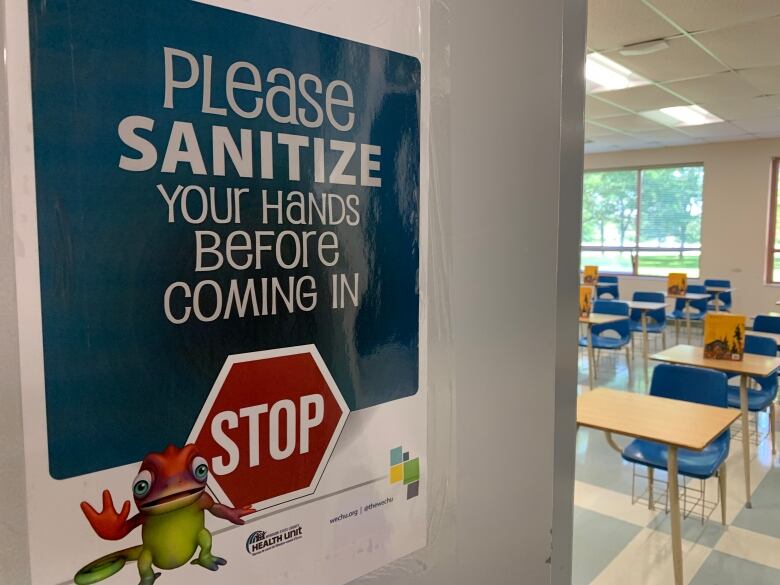Majority of Windsor-Essex students will be in class come September
Families asked to complete a planning survey by Aug. 21

Windsor-Essex's two largest school boards now have a better idea of how many students will be returning to classes in September, after a survey asked families to make a decision.
The Windsor-Essex Catholic District School Boardreleased some numbers Monday, showing about28 per cent of elementary students have opted for at-home learning.
About 19 per cent of secondary students will also be opting to learn from home.
The Catholic school board is still waiting on about 1,000 more survey forms to be submitted.
The Greater Essex County District School Board reported Monday that 76 per cent of secondary students will return to in-class learning, though they will be taking some courses equally in the classroom and at home.
The remaining 24 per cent of those secondary students will complete classes entirely from home.
For elementary students, 65 per cent will attend in-person classes. Another 23 per cent of students in kindergarten to Grade 8 will be learning online with 12 per cent using printed packages at home.
Among the families who opted for in-person learning was Jane McArthurwho decided on Monday that both of her daughters would attend in-person classes.
Up until the beginning of this week, McArthur said she was set on having her children be part of Cohort D the offline or printed package learning group. But after a conversation with school staff, she said she changed her mind.
"They talked to me about the specific school conditions, the approaches that they were taking to try to implement risk mitigation strategies at a very local level," she said, adding this included talk of the ventilation systems and windows to provide constant air flow.
"Those discussions kind of allayed some of my fears and...I got thinking that perhaps it wasn't as risky...as I was thinking."
The decision wasn't an easy one for McArthur to make and she said it's because her and other parents were made to feel as though any option they chose was bad.

"I feel like it's unfair to be putting these choices on individual parents. I think it's bringing out the disparities and inequalities in parenting and occupational conditions for people with children with different needs and disabilities," she said.
McArthur added that it would have been better if the government had started planning and implementing safety measures earlier in the summer, including allowing school boards to rent out larger spaces for kids to stay physically distant.
Families had until Aug. 21 to decide which option they would choose, so that both boards could prepare for classes.
Health officialshave been working with the school boards in the region to prepareguidelines and outlooks for September.
The health unit's recommendations include:
- Schools ensuring that physical distancing is maintained wherever possible.
- Cleaning and sanitization stations for staff and students.
- Mask-wearinginall indoor spaces and education with how to wear and maintain masks properly.
- Regular sanitization of high-touch surfaces.
- Allowing children to clean their stations and education about how to do so properly.
- Safe transport to school, with one student/household per seat and limited number of riders.
- PPE for school bus drivers and monitors.
- Masks and/or face coverings for all students on buses.
- Drop-off zones to safely exit vehicle and move into schools without congregating.












_(720p).jpg)


 OFFICIAL HD MUSIC VIDEO.jpg)
.jpg)



























































































